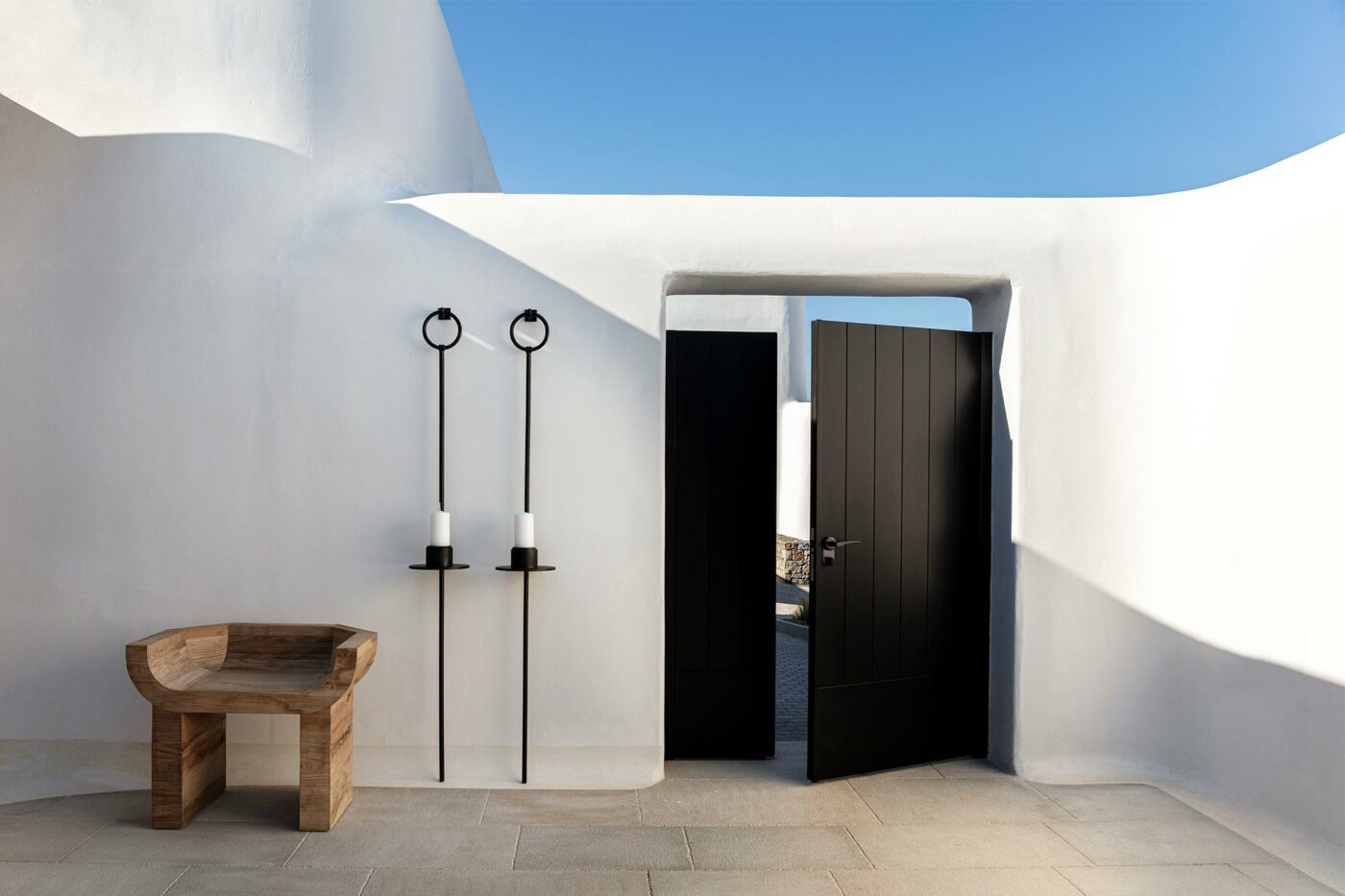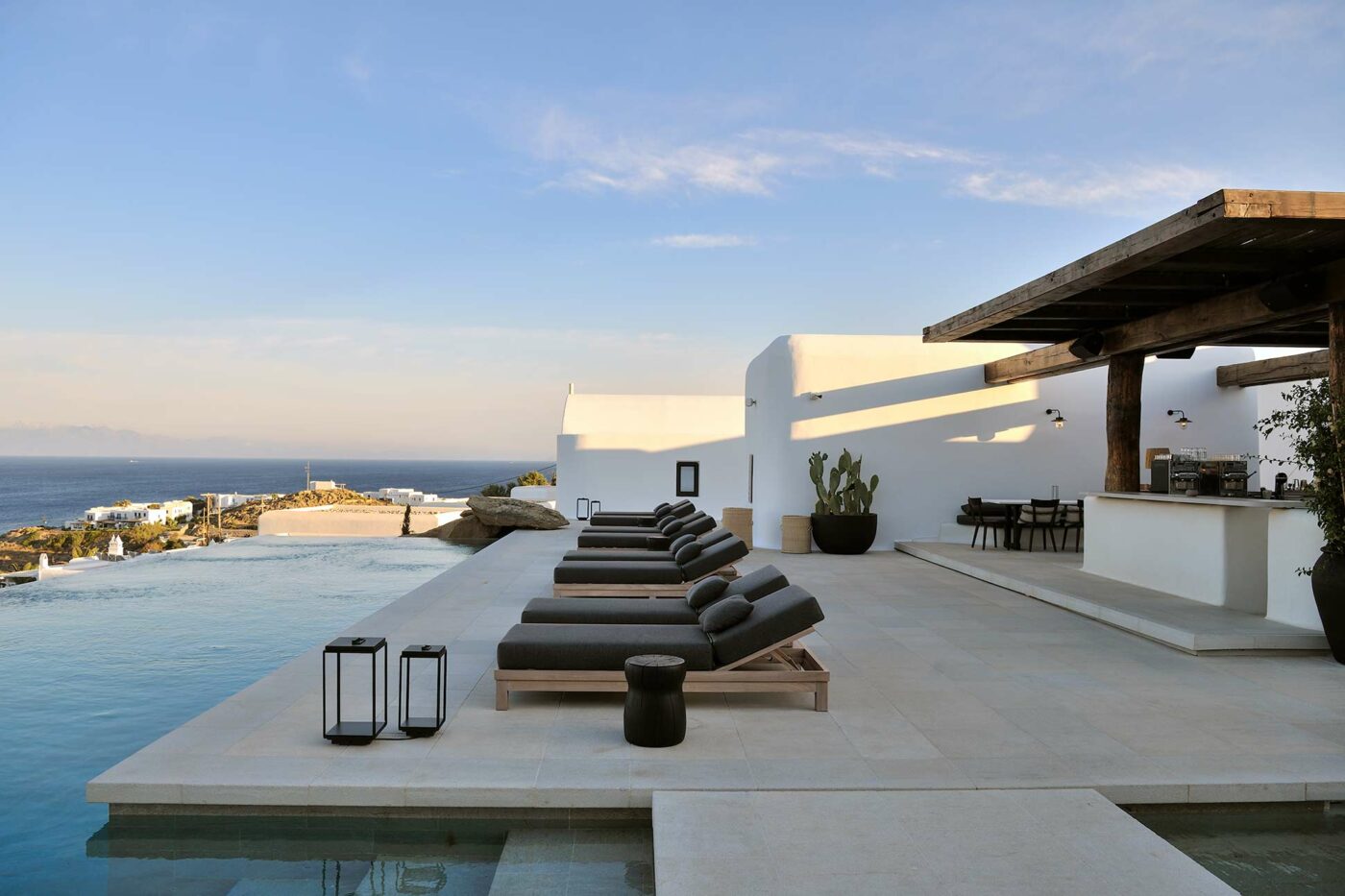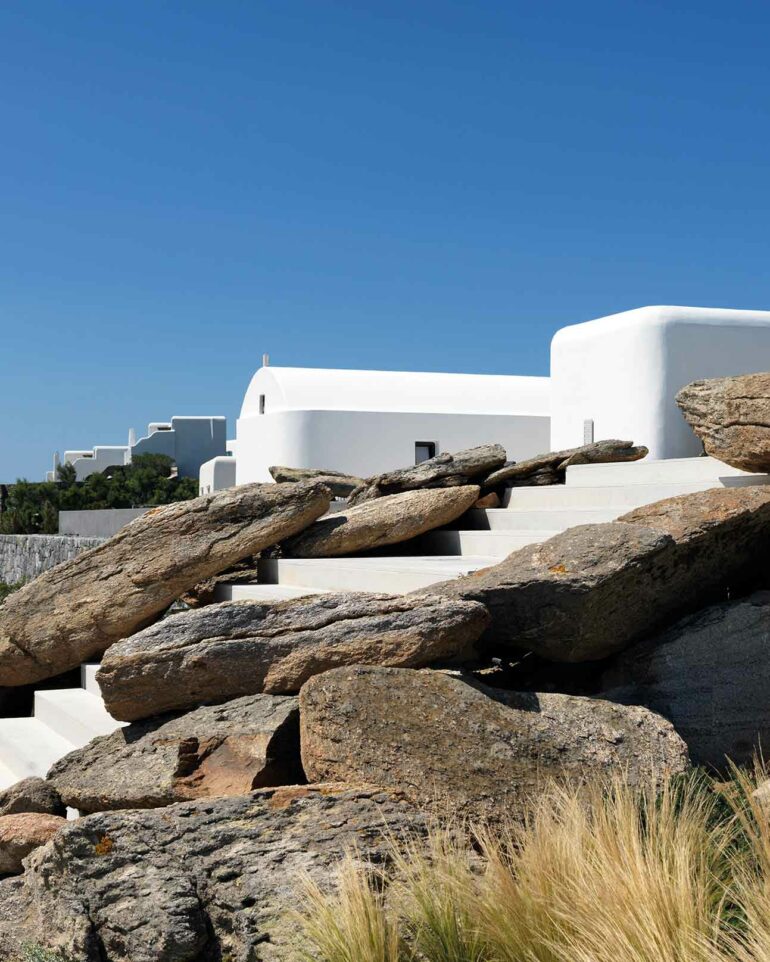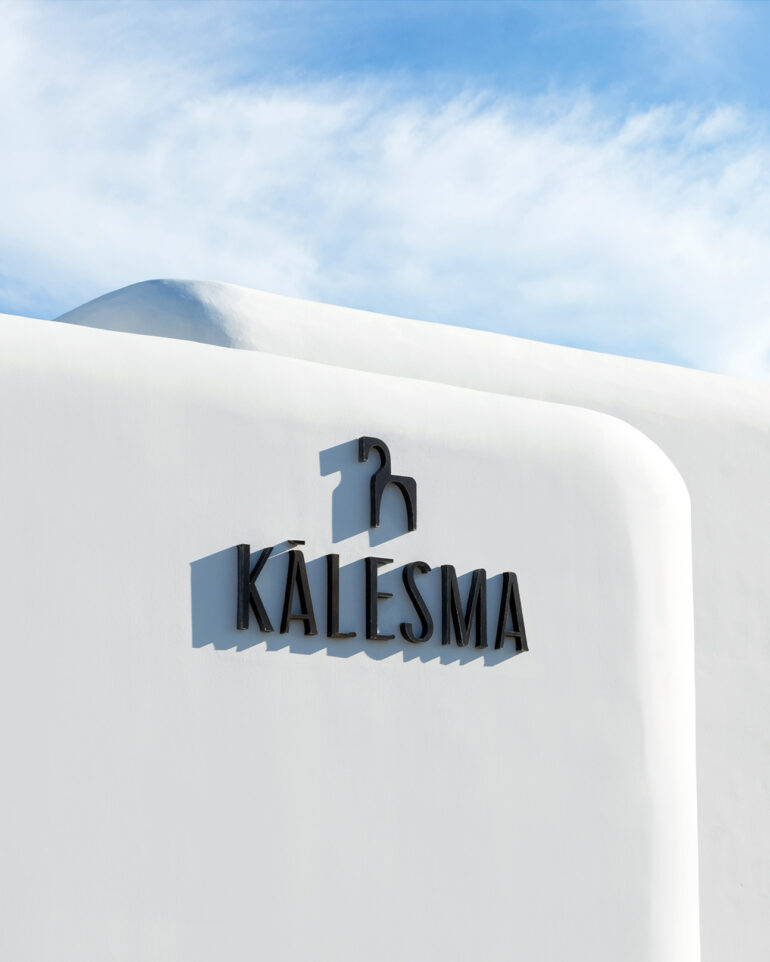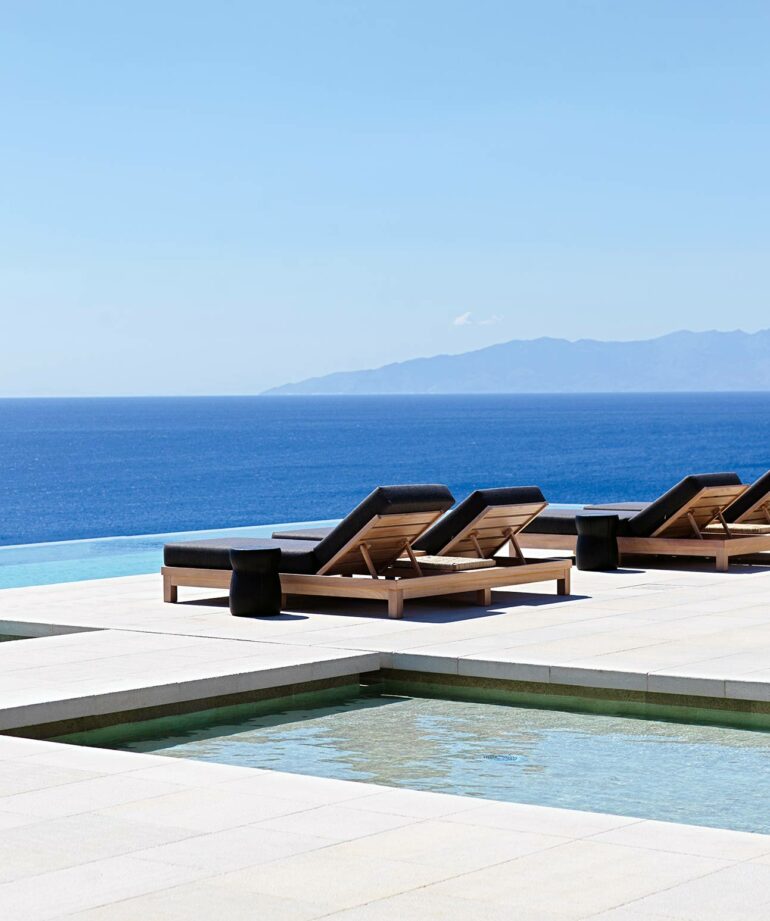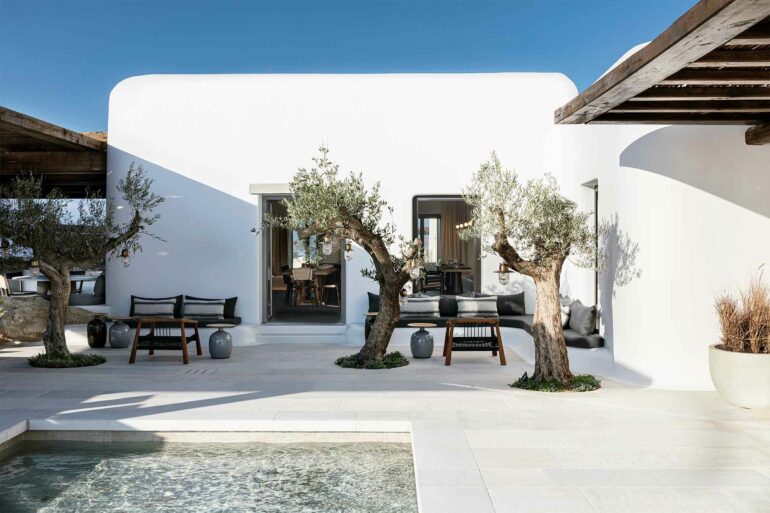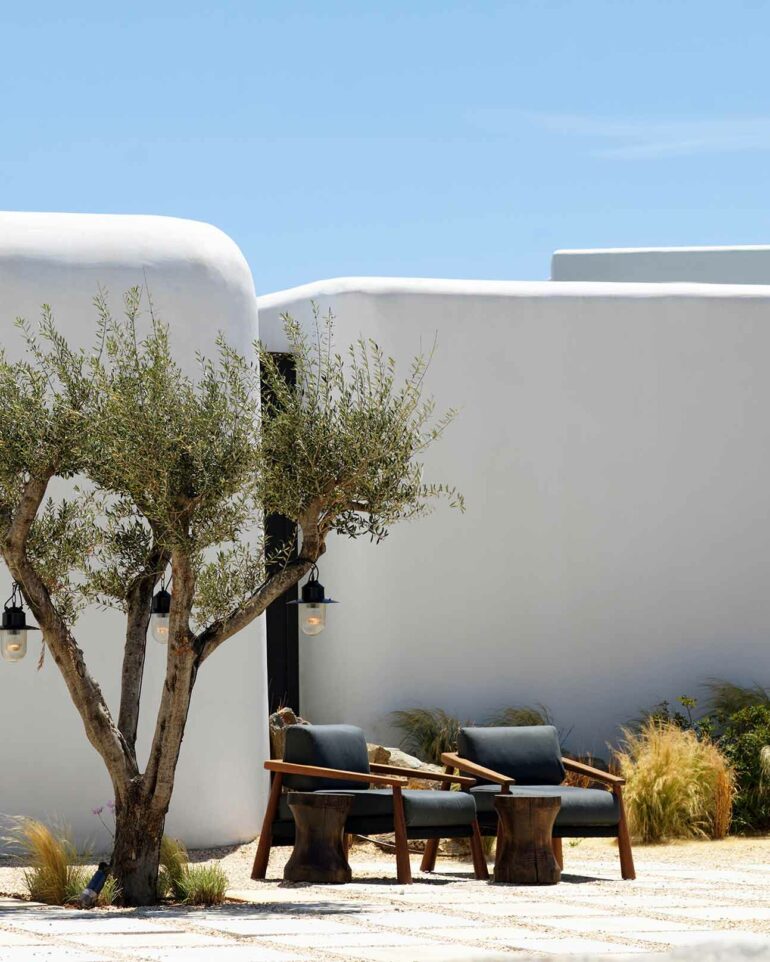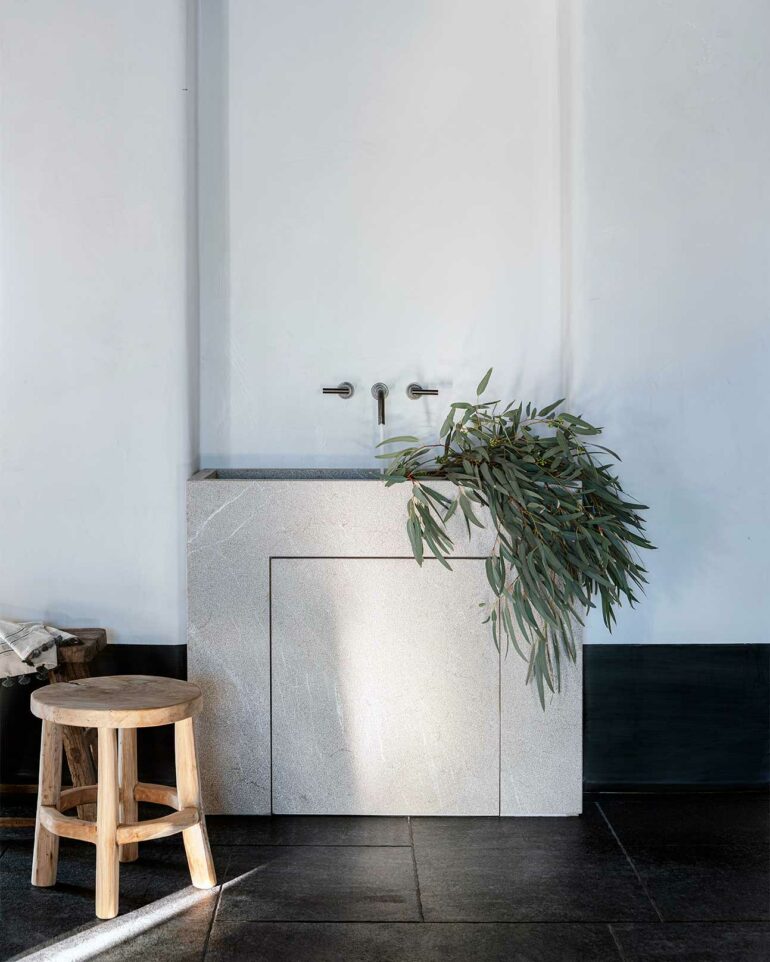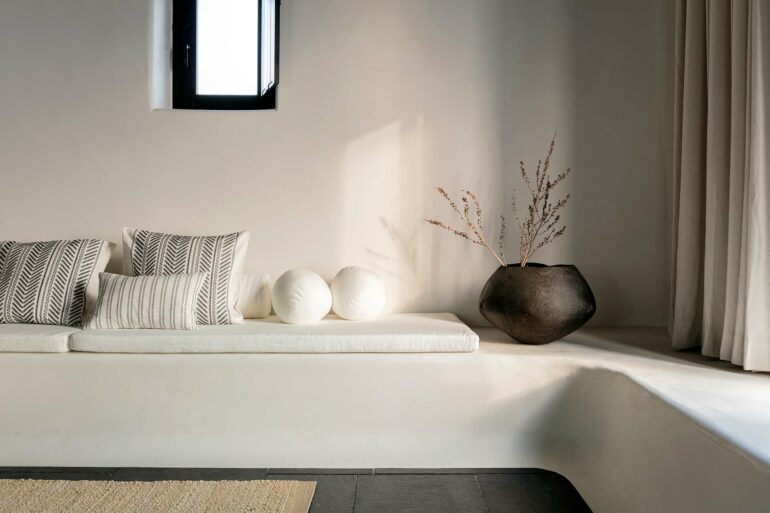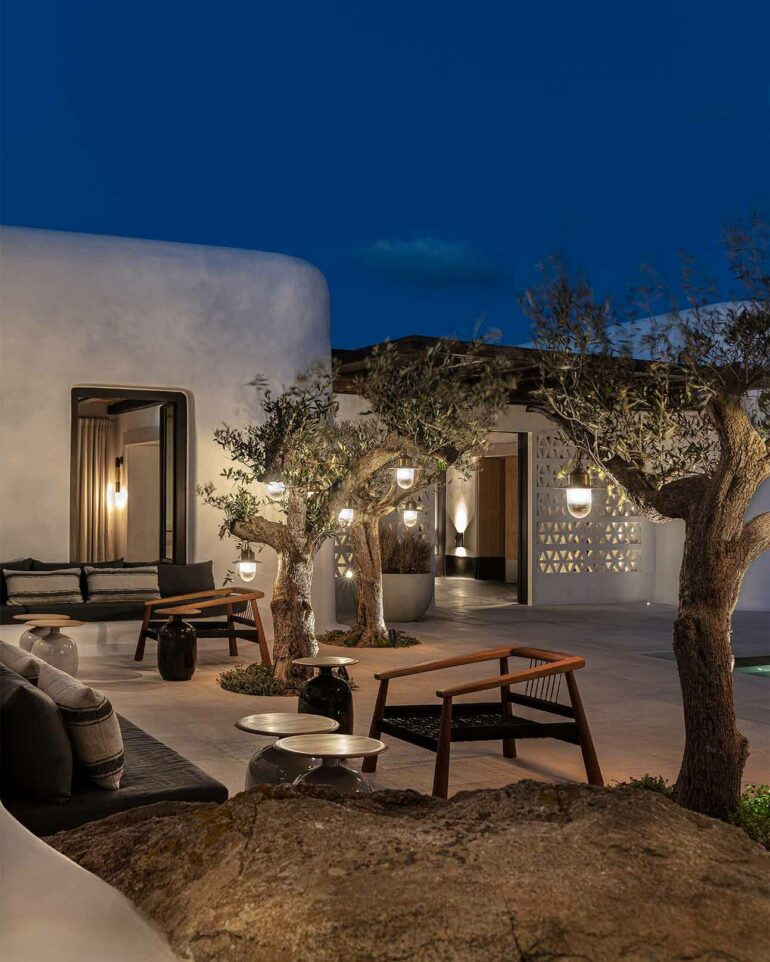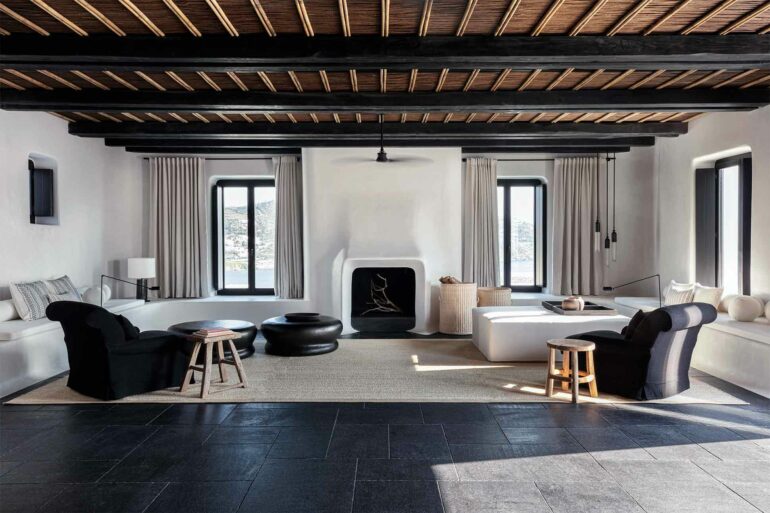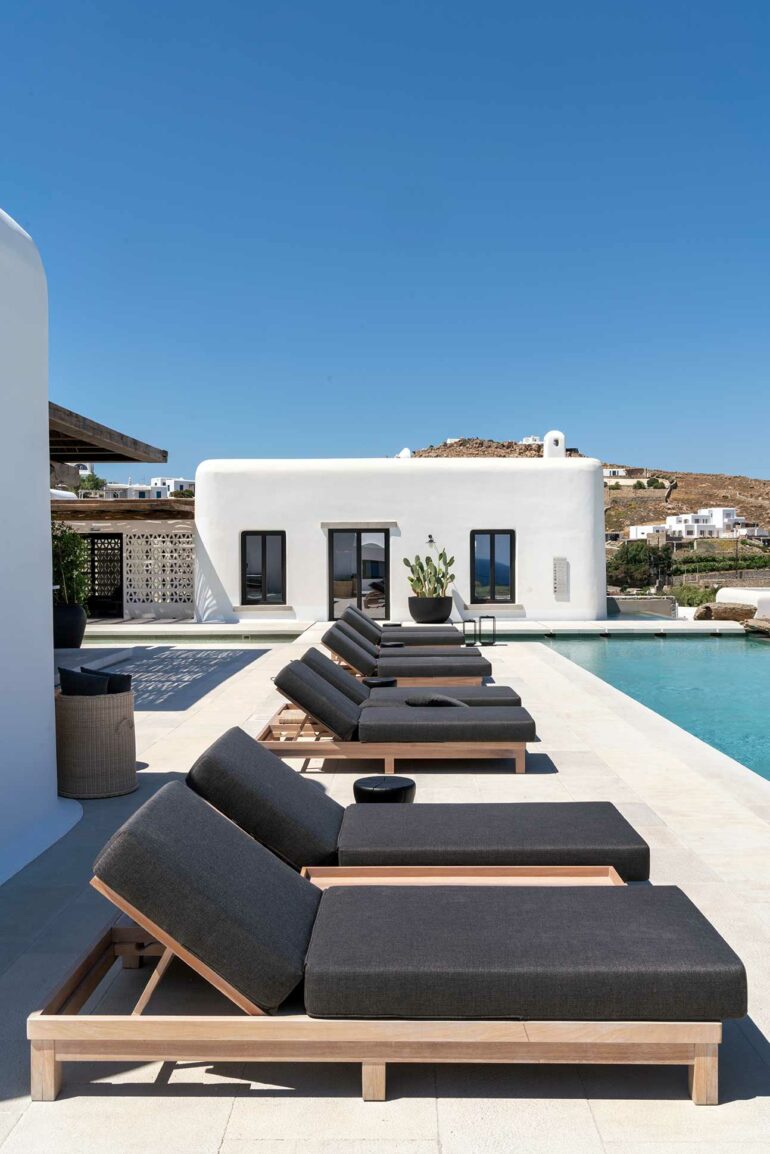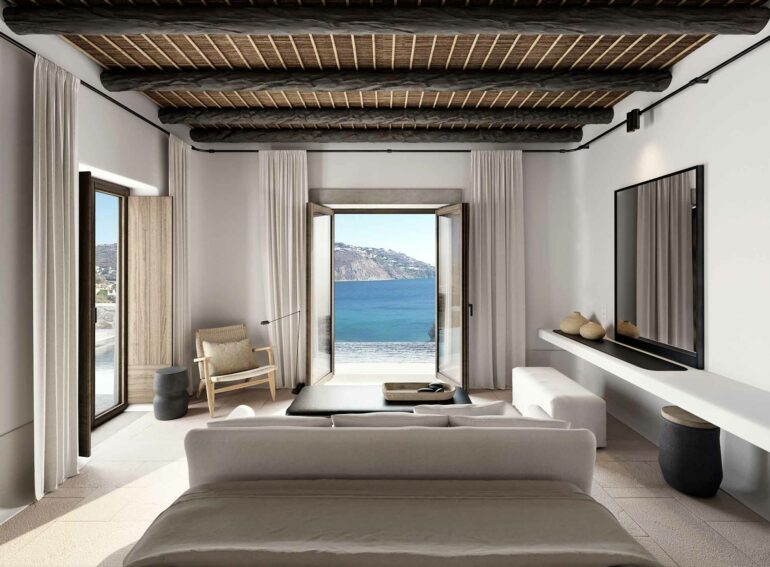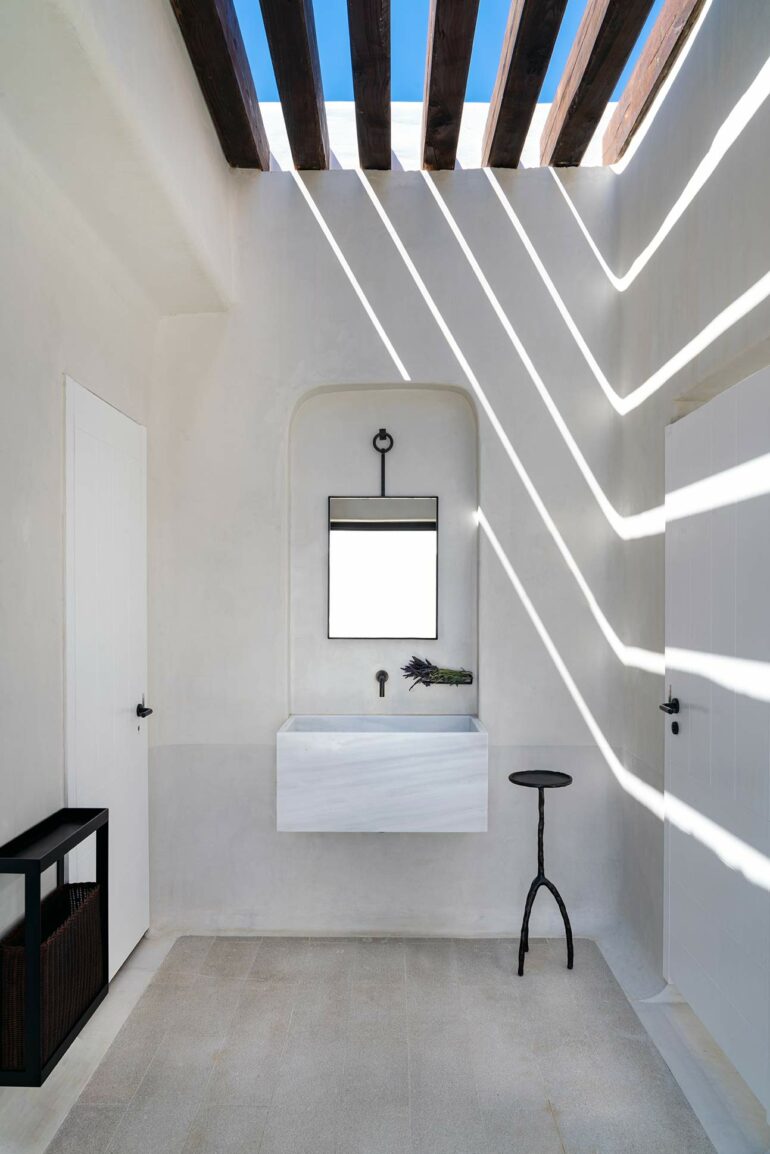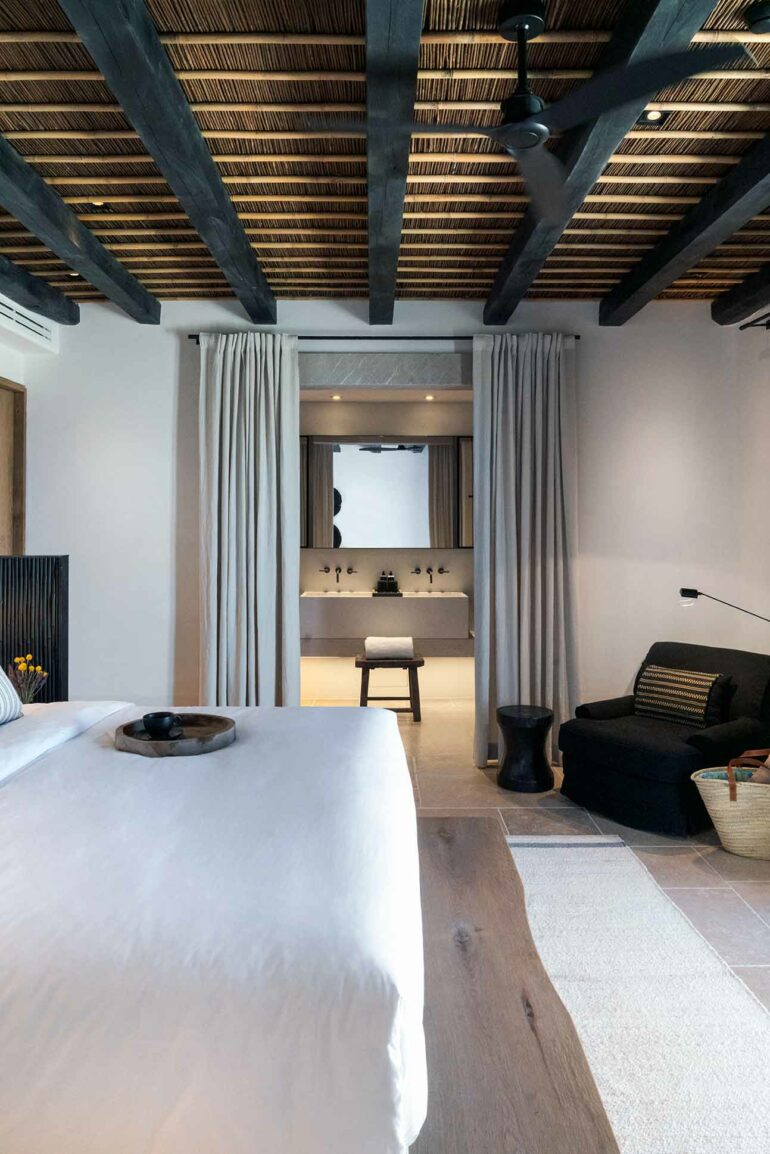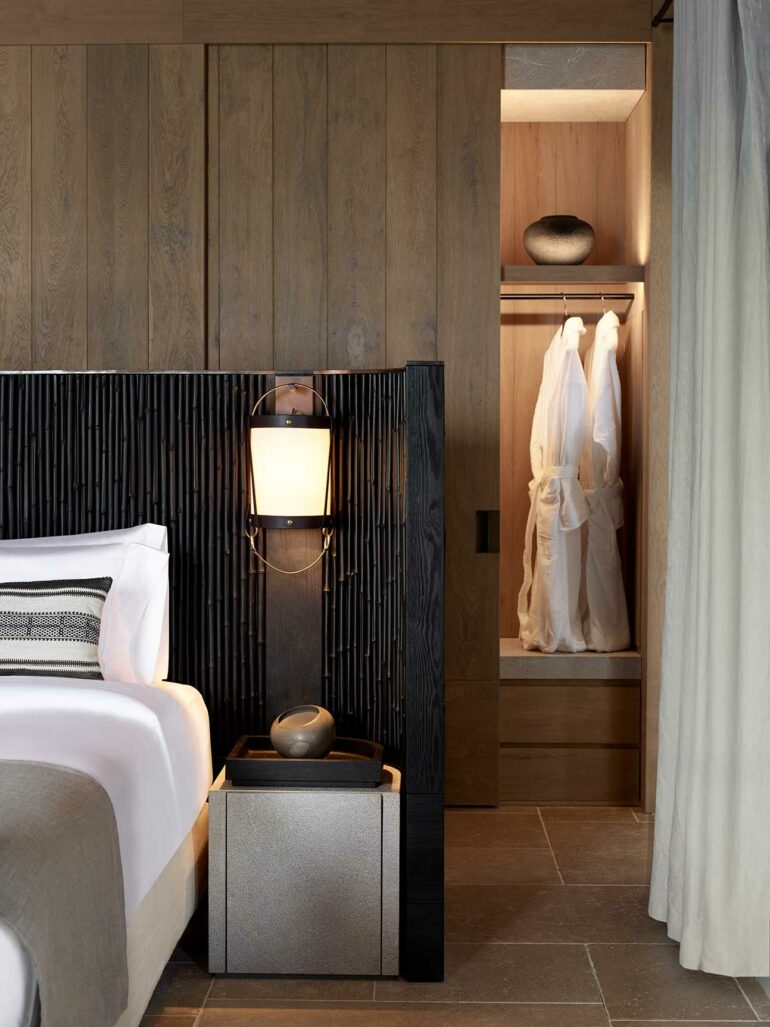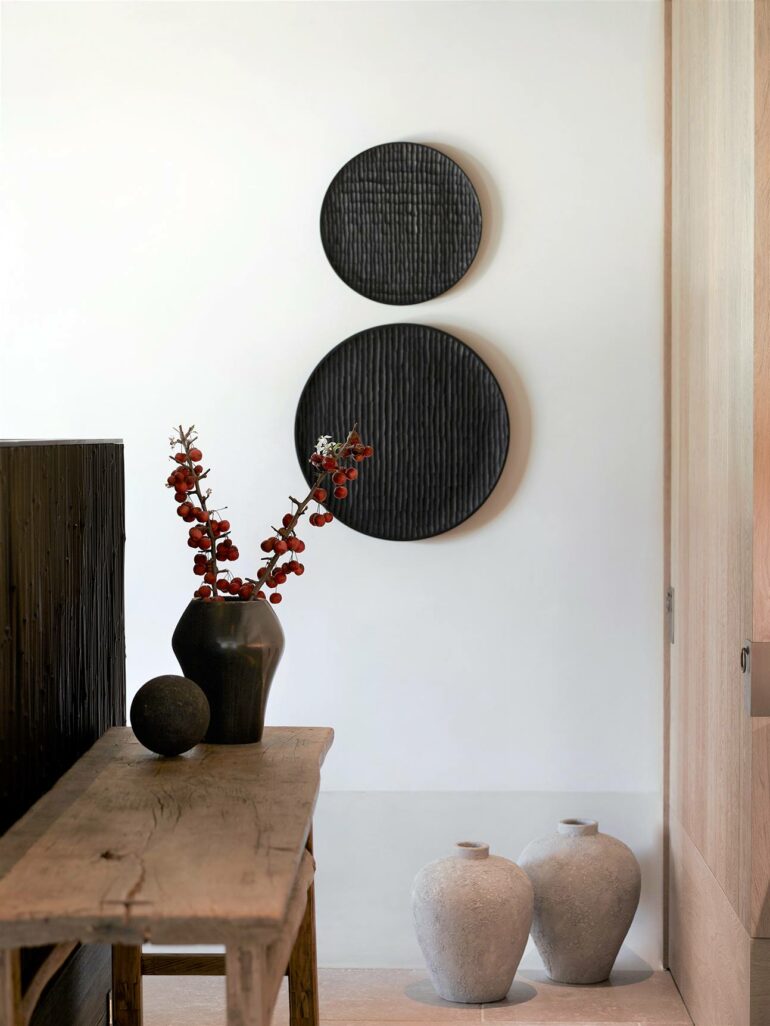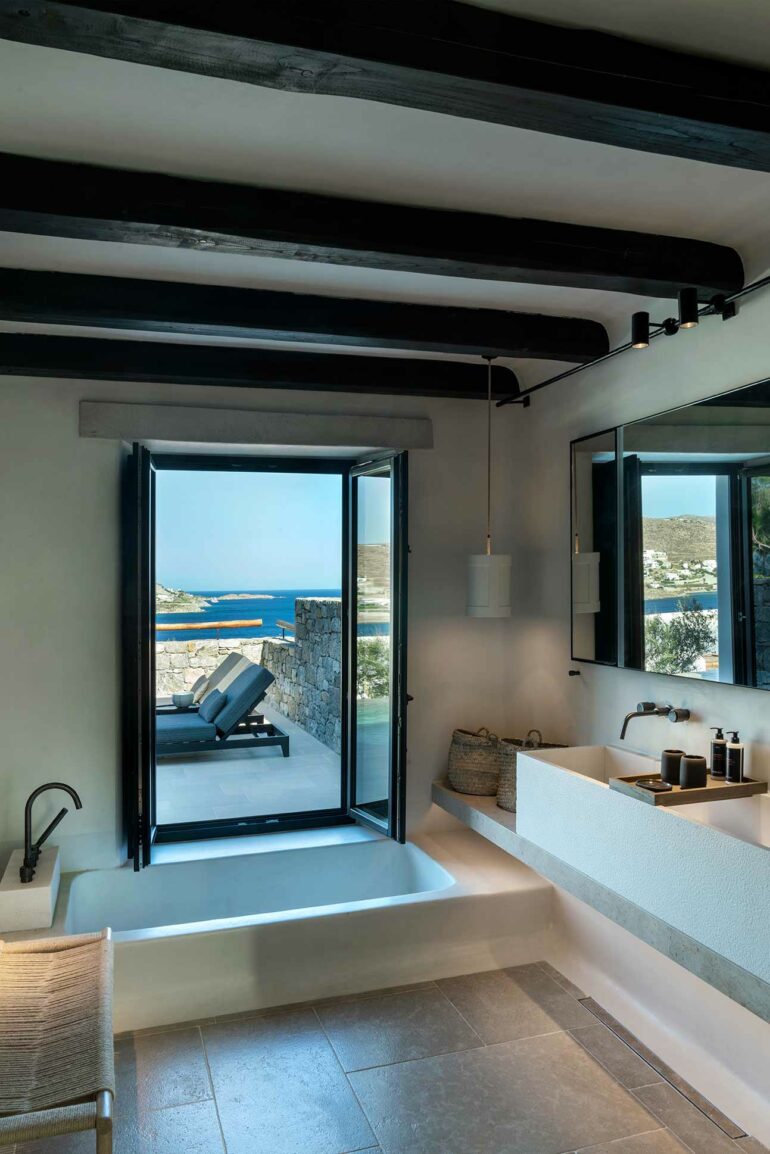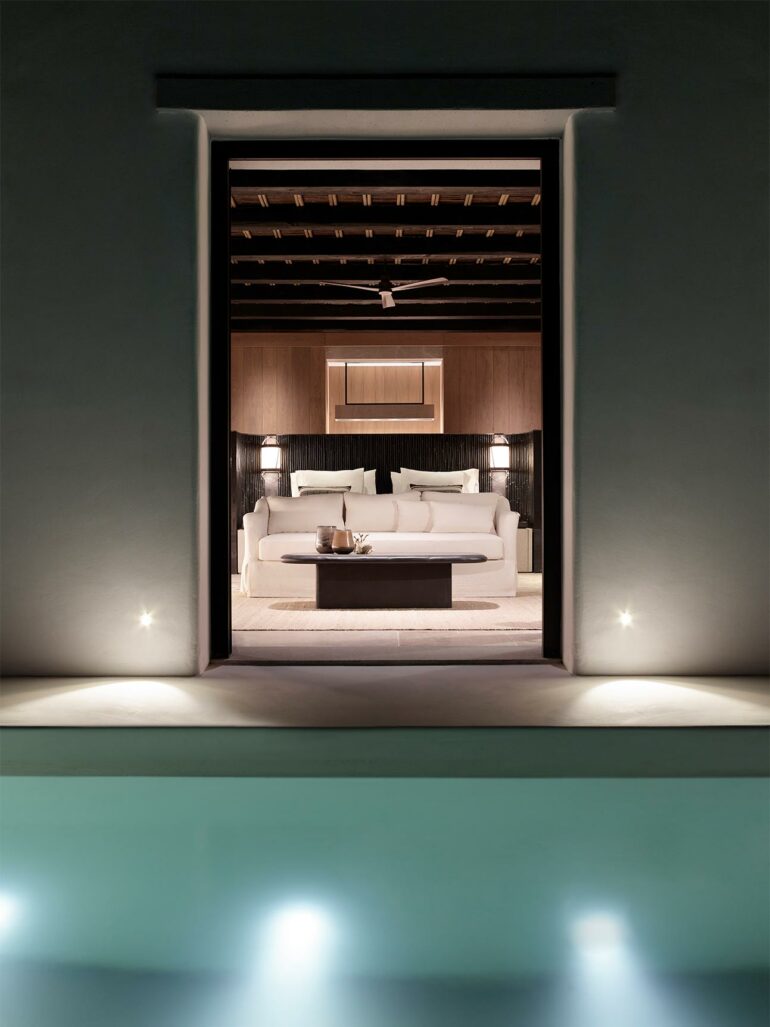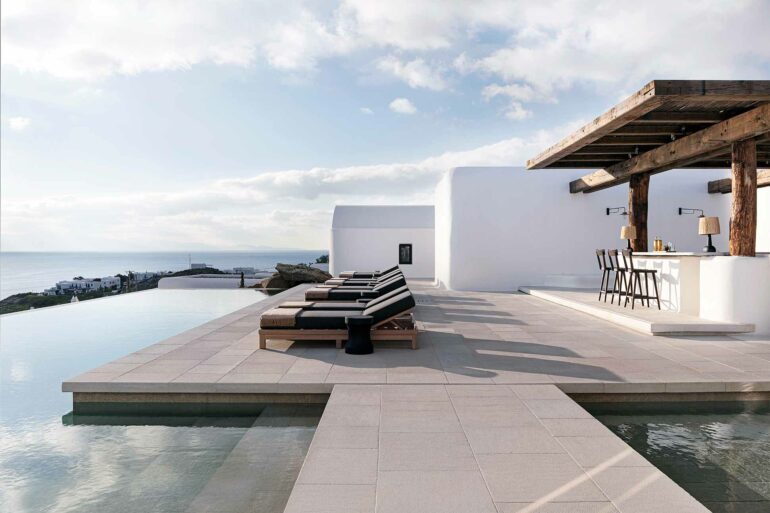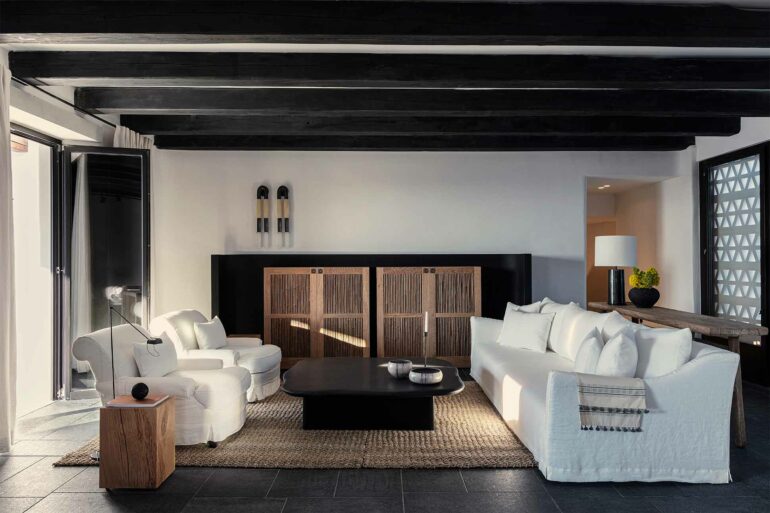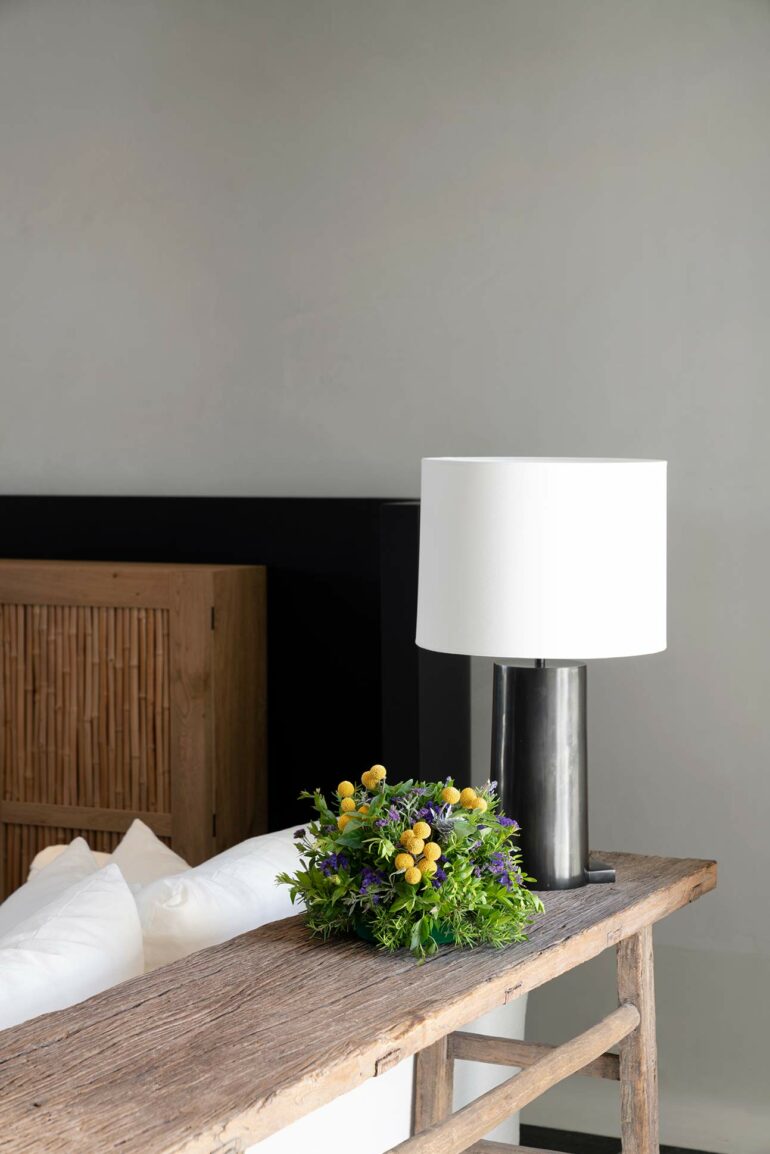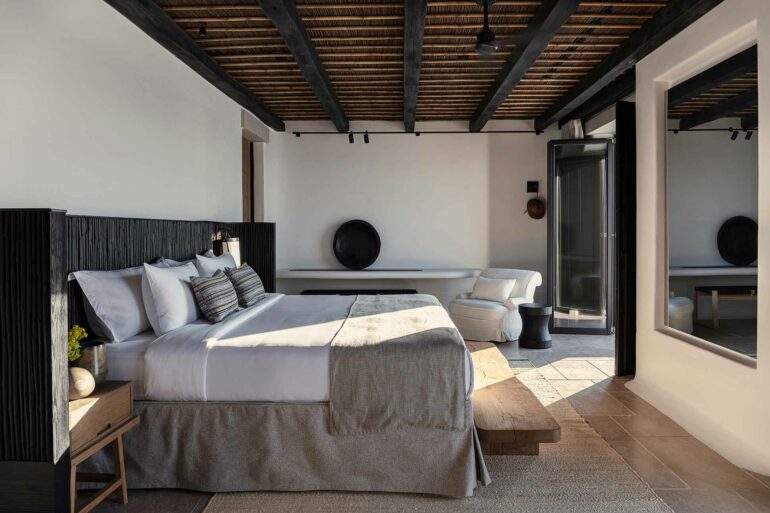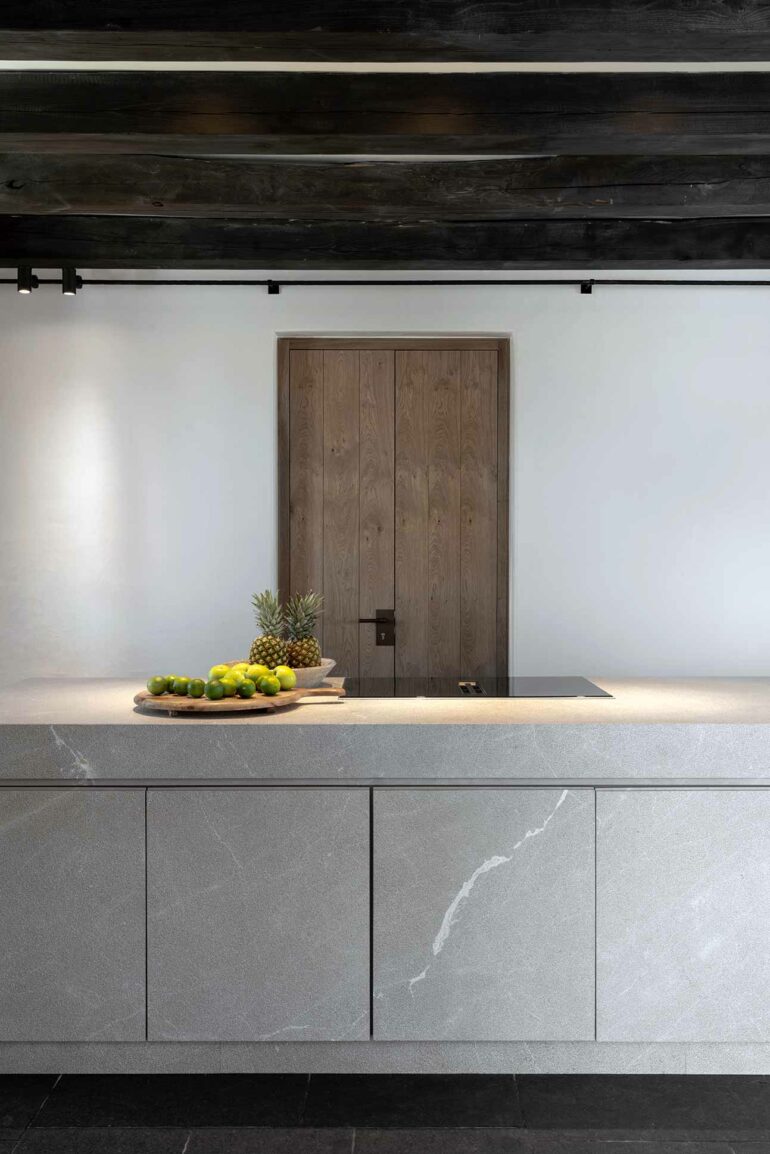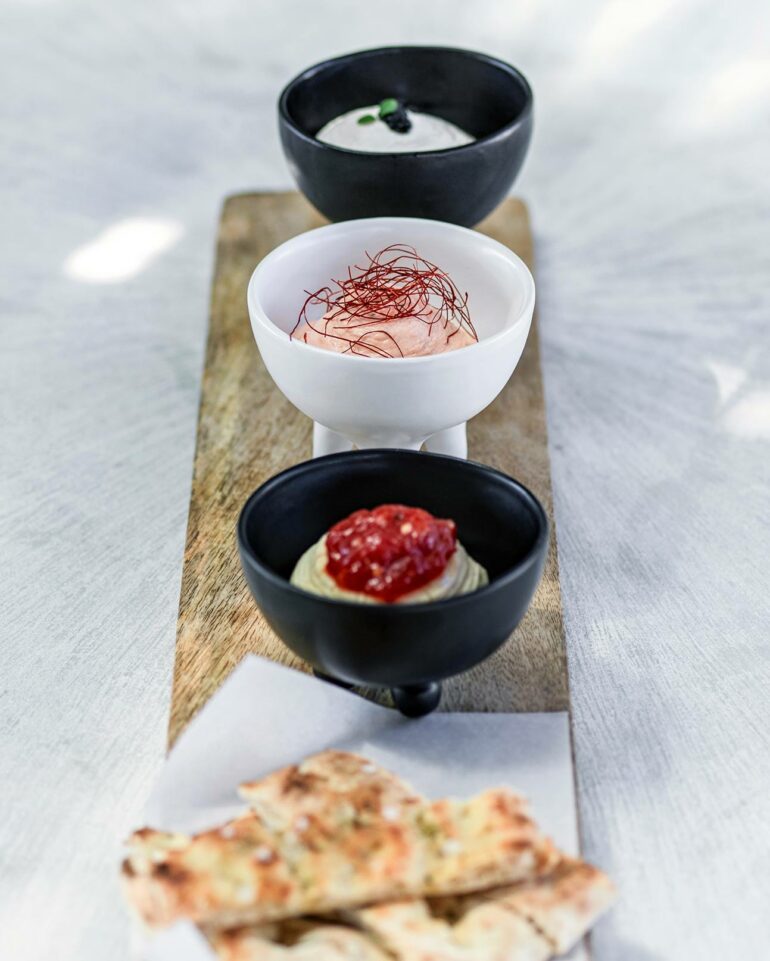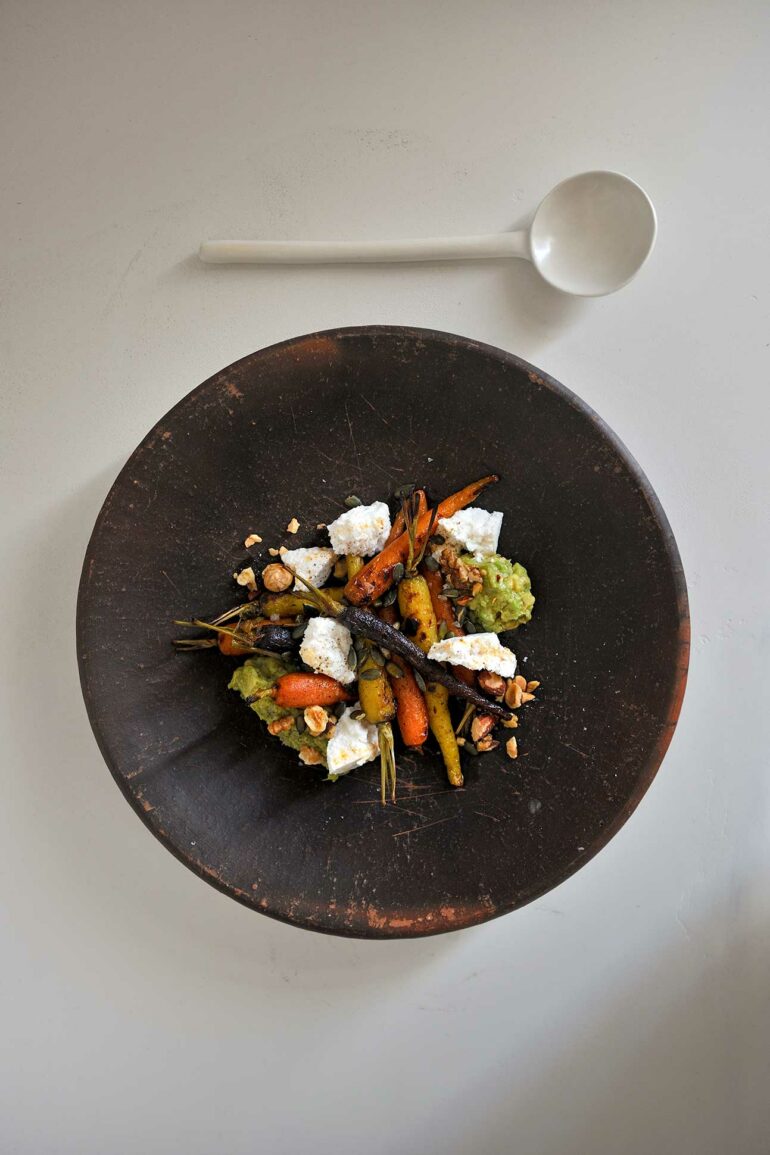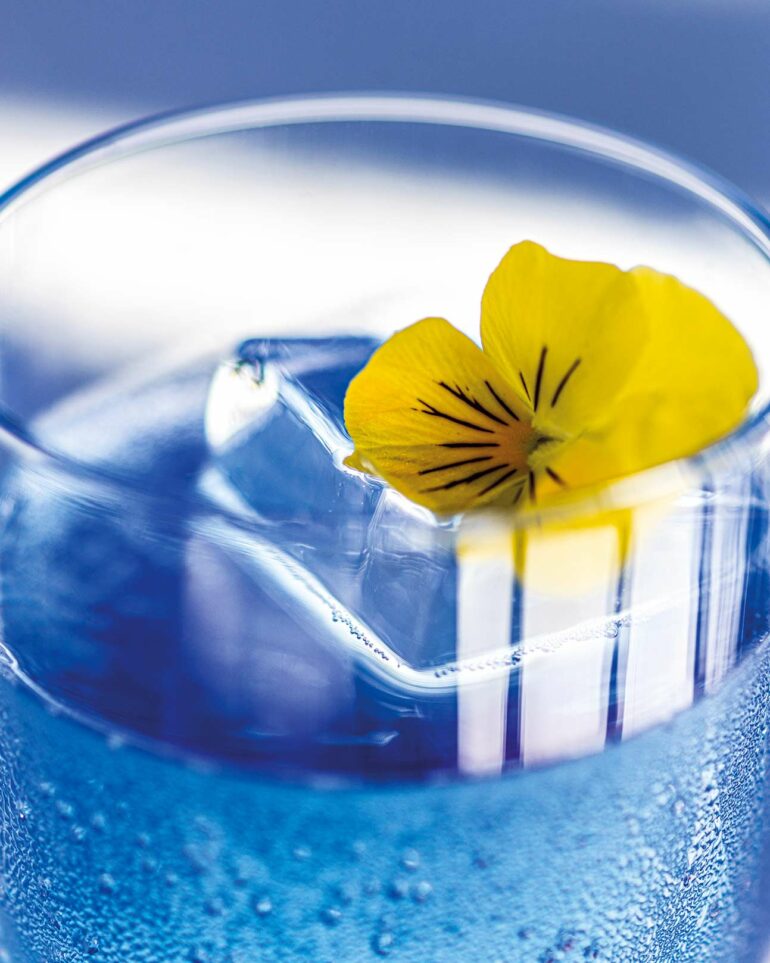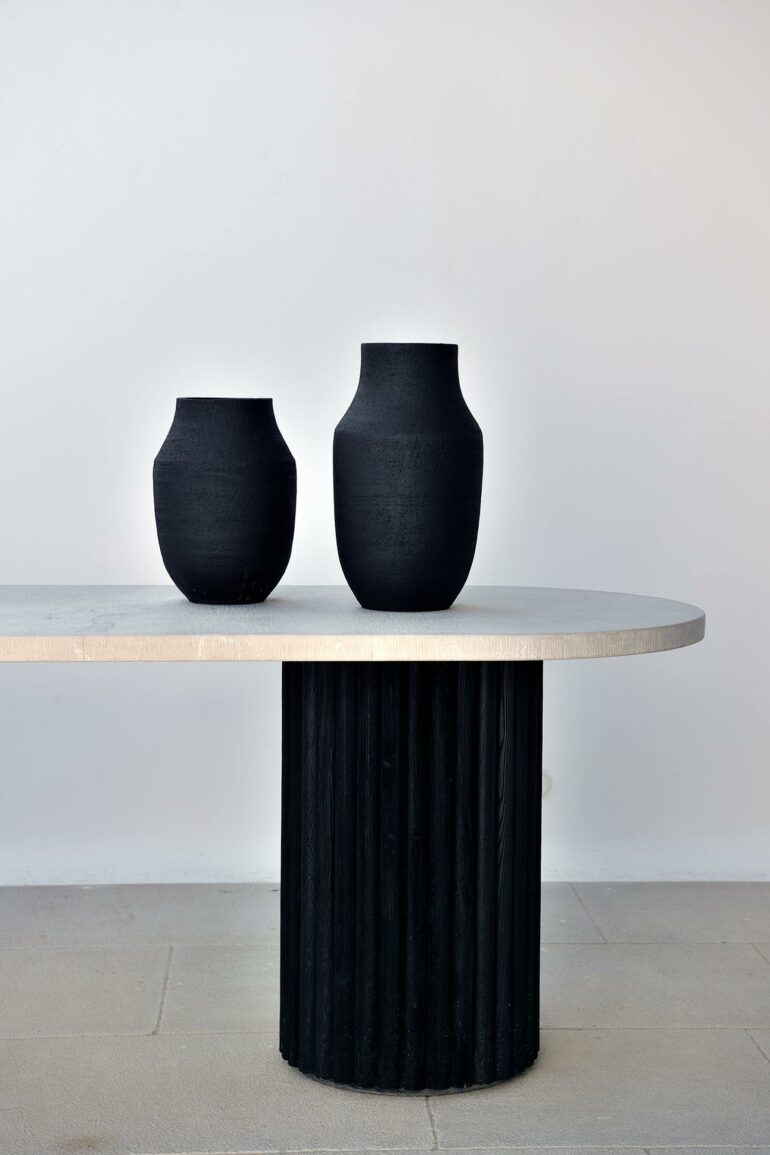The first thing you’ll notice stepping off a plane in Mykonos is a welcoming breeze. Along with the famous, whitewashed windmills of the old town, eternalised via a wealth of postcards over the years, it leaves little doubt as to why this place is lovingly referred to as the ‘island of the winds’. But another, yet warmer welcome awaits. Hospitality to strangers ranked high on the list of virtues in Ancient Greece and it’s an honour still bestowed on visitors by the people of the island, nowhere more graciously perhaps than at Kalesma.
There’s a word for the famous breeze you’ll encounter in Mykonos – the Etesians – and it’s vital in carrying seeds across the Aegean Sea. For decades, this particular circumstance has meant that ideas have also landed on Mykonos by means of air travel, only to bloom into all that makes the island so appealing today.
One idea that initially took the locals by surprise was that their tiny home in the Cyclades was somehow more fashionable than its immediate neighbours. Not that anyone would’ve argued with the influencers of the day; Grace Kelly, Brigitte Bardot and Sophia Loren. When shipping magnate Aristotle Onassis introduced Jackie O to Mykonos in 1961, the pair only amplified the island’s glamorous reputation. Everywhere the former First Lady went, her chic entourage was sure to follow. And throughout the 1960s and 70s, Mykonos remained the jet set’s closely guarded secret. Fast forward some ten years and the fun-loving and audaciously moustachioed queer crowd of the 80s set sail to join the party. Somehow, everything that landed on Mykonian soil flourished into fabulousness.
But there’s another, more modest history to the island. Before there were hotels here, visitors would stay with the locals. They would use the same facilities, help around the house and join their hosts (or, on occasion, an entire village) for simple dinners that would extend well into the night. It almost sounds too romantic to be true, but the French archaeologists who arrived here in great numbers in the early 20th century experienced a sense of Mykonian hospitality that was unorthodox, unpretentious and arguably unrivalled. They had come to excavate the treasures of nearby Delos, a mythical island that once ranked among the world’s great, cosmopolitan centres. But beyond that, they found a community so welcoming and a speck of land so blessed with natural beauty, many of them never left.
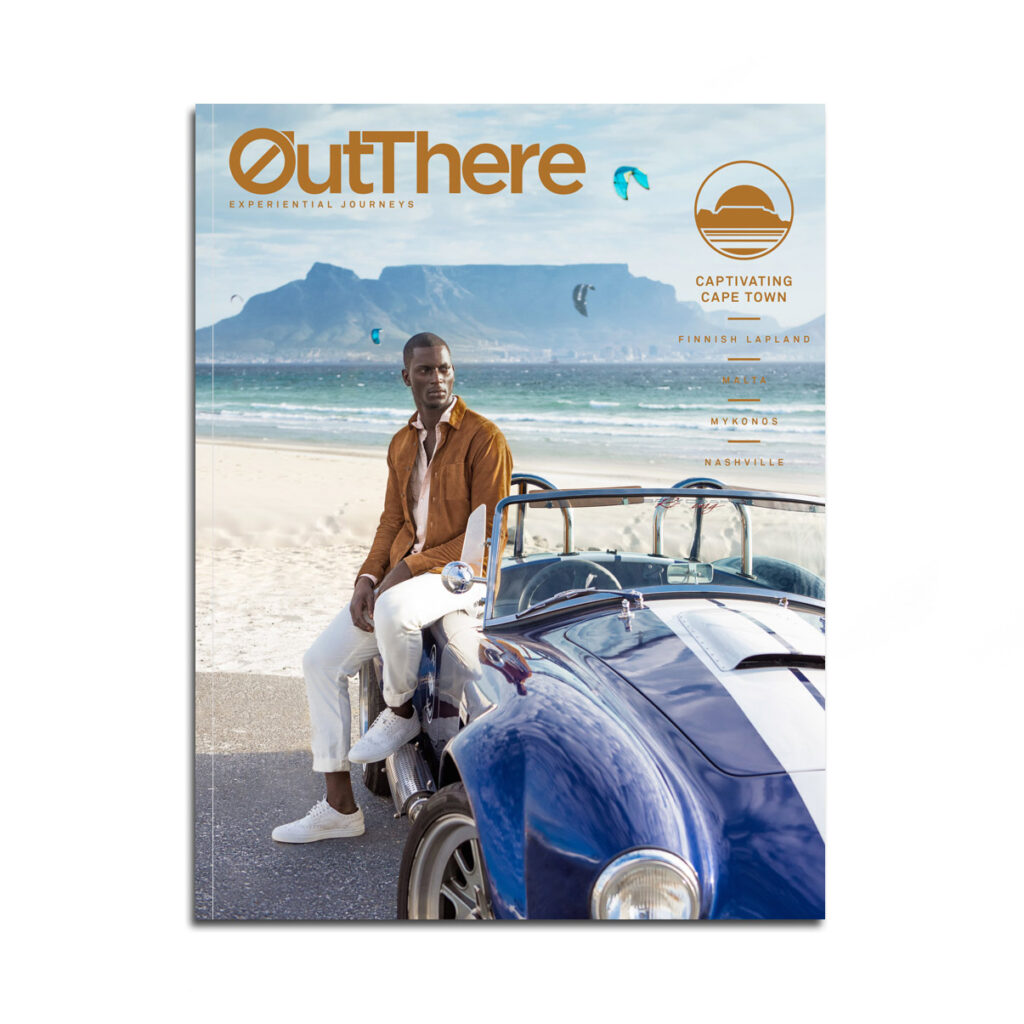
This story first appeared in The Captivating Cape Town Issue, available in print and digital.
Subscribe today or purchase a back copy via our online shop.
This is the Mykonos we’ve come to find, albeit in an ever so slightly more luxurious setting. For most of us, the coronavirus pandemic hasn’t merely prevented us from jumping on planes and visiting far-flung destinations; it’s made it difficult to experience the more essential, little things, that make us human: emotional warmth, meaningful exchange and access to the interior worlds of others – a privilege rarely granted unless you’re at the right place at the right time. One such place, as luck would have it, is Kalesma, which opened its doors on the southwestern tip of the island in May 2021.
Kalesma, which aptly translates to ‘inviting’, sits on an elevated spot overlooking Ornos Bay. Where there was once a single 80-square-metre house that belonged to one of the co-owners’ grandfathers, a total of 13 one-bedroom suites, 12 one-bedroom villas and two larger, standalone villas now emulate the neighbourhood feel of a traditional, Mykonian village. Externally, Kalesma is a showpiece of Cycladic design, consisting of whitewashed buildings with smooth surfaces and rounded edges that help deflect the island’s strong winds. And, although we doubt it was intended, its sugar-cube architecture, courtesy of Athens-based design practice K-studio, also brings to mind an ancient myth, which claims that this area of Mykonos, Aleomandra, was named after the stables that once sheltered the horses of Olympic God Apollo.
Among Greece’s most hotly anticipated new hotels in years, Kalesma had appeared on our radar long before it opened, thanks to a range of desirable stats that had the industry buzzing: each of its 63-square-metre suites, identical in layout, features a 90-square-metre terrace in addition to a private patio with an outdoor shower perfect for a Robinson Crusoe experience (and well-lit selfies, as we discovered). Step through your suite’s front door and your eyes inevitably gravitate towards your very own private, heated infinity pool straight ahead, before fixing on uninterrupted views of a glistening, Aegean Sea beyond. To put it simply, Kalesma promised to raise the bar for Mykonos’ luxury hospitality scene.
And it doesn’t just look pretty from the outside. The interiors were designed by Vangelis Bonios, whose stylistic handwriting isn’t dissimilar to that of Belgian designer Axel Vervoordt’s. Accordingly, our suite was a melange of organic shapes, earthy colours and natural textiles, topped off by utterly original, equine-inspired light fixtures by our bed. Every piece of furniture or decoration had a reassuring sense of being substantial rather than superficial, a quality that contrasted elegantly with the many more delicate details – from linen fabric worked in between layers of glass in the bathroom to a wicker-like ceiling accentuated with bamboo canes. Above all else, our suite was sensual, soothing and balm for the soul. We immediately felt at home.
It was, in fact, only upon walking up to the hotel’s main complex for breakfast in the mornings, that we were frequently reminded of just how distinctively Eastern Mediterranean Kalesma is. That’s because any amount of time spent outside entails at least a noseful – or several – of the fragrant scent wafting around the hotel’s grounds, an olfactory kaleidoscope of rosemary, basil, lavender, red sage, pampas grass, jasmine and pomegranate plants growing among prickly pear cacti, fig trees and no fewer than 100 olive trees (this is Greece, after all). Its landscape architecture is arguably one of Kalesma’s greatest achievements, beckoning guests forth from their private dwellings to mingle around the property.
But that wasn’t the only thing that lured us outside. From Pere Ubu, the hotel’s outdoor restaurant, guests can view the sun rise and set from one and the same spot. To watch the sun move around the property as the day goes by is an exercise in observation: look long enough and you’ll see beams of light encroach from behind every corner, casting gentle shadows over whitewashed walls. It all adds to an unmistakably Cycladic allure, but we found the dance of the sun also had a near-hypnotic quality that encouraged us to slow down, unwind and be present.
You’d be well advised to be present when eating here, too, for Pere Ubu’s gastronomic offering is quite simply outstanding. We dined on stuffed courgette flowers, fennel carpaccio with black olive paste, spicy cauliflower ‘steak’ and almond-based cheese with rosemary straight from the restaurant’s wood-fired oven (‘it’s the future’, said one of Kalesma’s co-owners, whom we raved to about the hotel’s innovative, plant-based dishes). The ingredients, many of which are grown on-site, are often used in unexpected ways – think traditional Greek salad, but refined with blueberries, figs and a lemony poppy seed dressing. Every dish we tried felt light, local and loved by the careful hand that put it all together. Moreover, it felt rooted in the region’s culinary codes.
There are no fancy Japanese or trendy Peruvian options on the menu, as either would clash with Kalesma’s mission to revive a more sincere and authentic side to Mykonian hospitality, one that receded as the island gained cult status. To us, this was a blessing. Despite all the luxury conveniences, from private experience concierges and iPad-operated in-suite entertainment systems to yacht charters and helicopter transfers, the hotel actually excels at – wait for it – understatement. And therein lies its charm: Kalesma is all about gathering around a table, sharing mezze and having one too many glasses of ‘vinsanto’. During its weekly dinner parties, which bring together guests in an intimate setting, people feel at ease to reach beyond the edge of their table, make friends with others and speak without reservation.
We’re not saying this place is a spiritual retreat (although the name is conveniently chantable: ‘kaaa-lesss-maaa’), but it does bring people together in a way you wouldn’t readily associate with Mykonos. In conversation with our fellow guests, we found ourselves surprised by how cordial, honest and even vulnerable we sounded. Spend a few days here and you’ll find Kalesma provides a cushion for the mind and a safe space for your feelings. It’s a place to unravel thoughts, recalibrate, cultivate relationships and create synergies. For all of us, who were forced to live inside our sometimes claustrophobic selves as planes were grounded and borders closed, the hotel constitutes a return to something more human, and humane.
Eagle-eyed guests might even spot a ruin or two on nearby Delos while sipping on a drink at the hotel’s sunset lounge. The French archaeologists of the early 20th century would’ve loved this view. What they found on the tiny islet were remnants of a society that was permanently settled: many who were born on Delos never left. But their houses featured inner courtyards to entertain guests and the island’s amphitheatre radiates a sense of community to this day. It points to one simple truth: the Cycladic people of yesteryear hardly had the privileges we have today – but they had one another.
Luxury travel experts Black Tomato can arrange your entire journey to Mykonos for you, including four nights in a Kalesma suite, flights and private transfers. Booking with Black Tomato’s ‘State of Flex’ gives you the company’s most flexible terms available. Wherever possible, this will include fee-free postponements and 100 percent refunds, should any Covid complications arise between booking and travel, up to 30 days prior to departure.
Photography by Dionisis Andrianopoulos, David De Vleeschauwer, Katerina Avgerinopoulou, and courtesy of Kalesma


